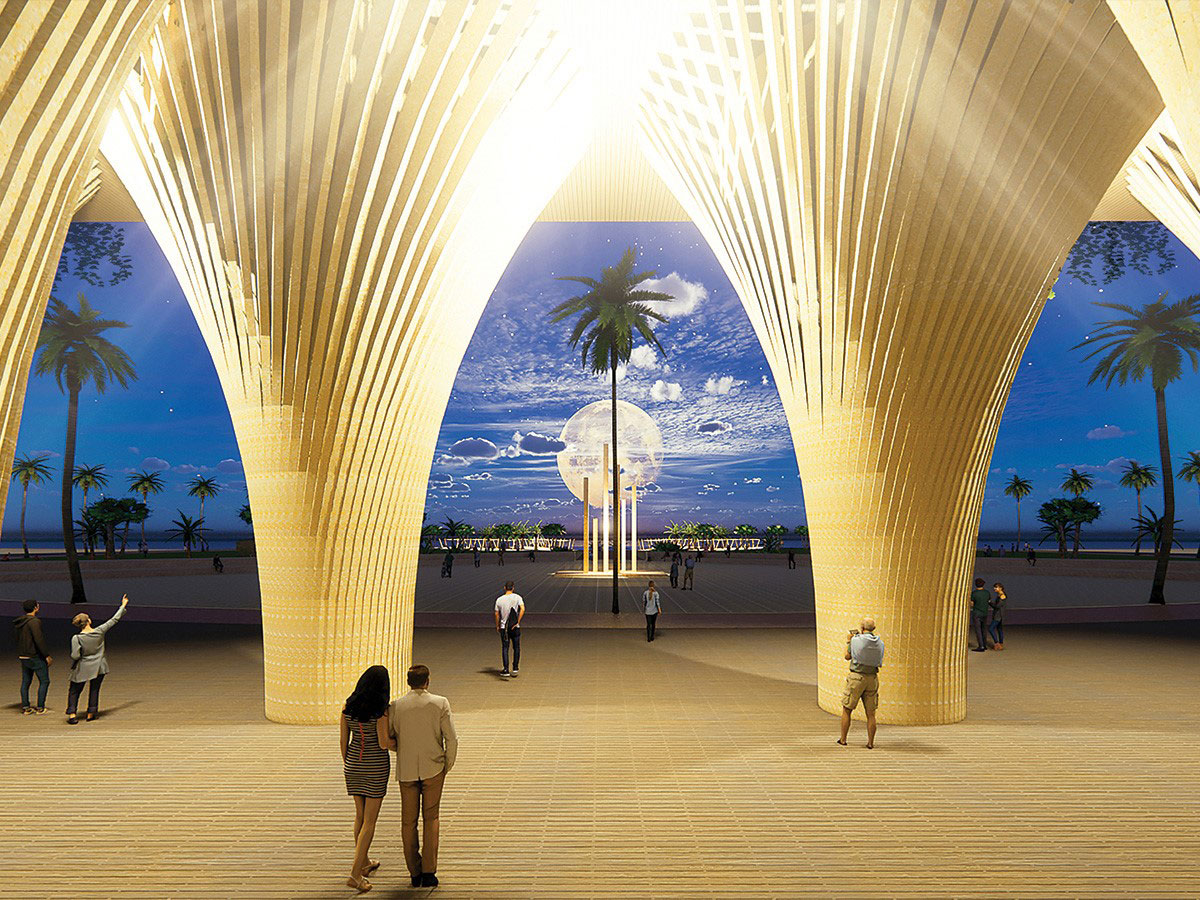A project planned for Ecuador is set to create a ‘Silicon Valley for the circular economy’.
Designs have been unveiled for a modular and sustainable village made from 3D-printed cacao waste. Cacao Eco Village will be located on the coast of Ecuador’s Manabi province, where farmers produce chocolate by extracting cocoa butter and solids from cacao beans. Designed by New York-based architectural practice Valentino Gareri Atelier for Ecuadorian chocolate manufacturer Muze and non-profit organisation Avanti, the village will boast 3D-printed structures built from recycled elements of agricultural crops. Construction will also incorporate other local materials such as bamboo and wood.
The modular design will create a self-sufficient village, with building facades drawing inspiration from the wide range of multi-coloured Ecuadorian houses and from the cacao trees’ colourful fruits. Decorative rooftop water tanks will collect rainwater.

The village will incorporate a cacao-processing chocolate factory, as well as an educational and research centre and co-working and co-living spaces. Also planned as a tourist destination, the beachside site will feature a large network of cycle paths and pedestrianised boulevards. Charging stations for electric cars will be provided throughout the community, with cars and trucks only allowed to drive in designated areas around the factory. Vegetation such as palm trees and large expanses of grass will cover the space between each cluster of modules that make up the village.
Valentino Gareri Atelier claims the project will create a Silicon Valley for circular economy innovators. “This sustainable and smart infrastructure emerges as a solution for the environmental and social impact of the cacao industry using a circular economy model as a creative solution for reducing environmental footprint, generating increased income, reducing resource dependency and minimising waste,” he said.
Source: Engineering & Technology





Leave a Reply
Want to join the discussion?Feel free to contribute!